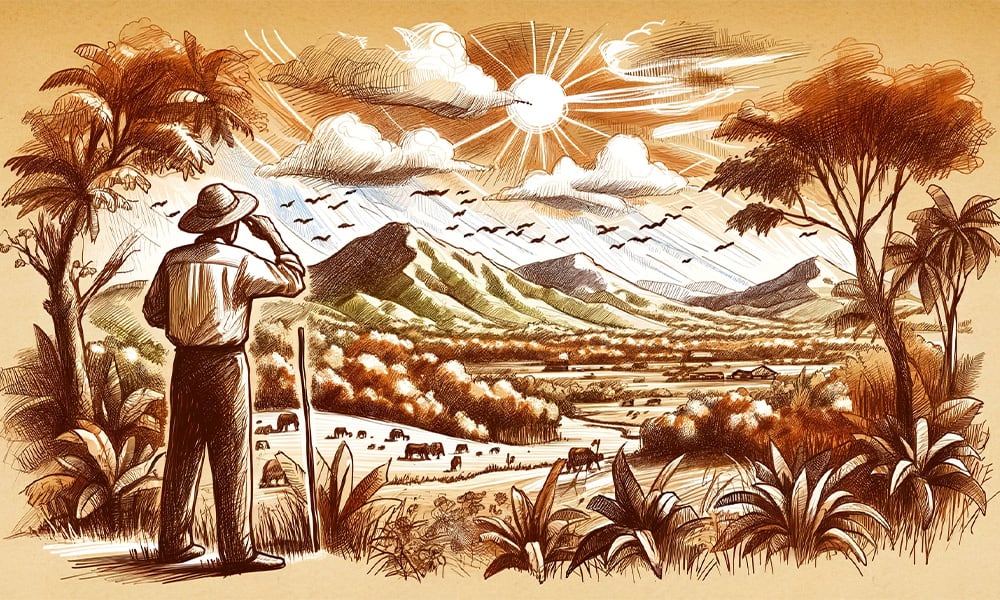Is 2024 going to be a long, hot, dry year? Well, if you believe in the Costa Rican tradition known as ‘’pintando los dias’’, the answer at this moment seems to be yes. If you have never heard of this, it is a piece of Costa Rican folklore that says that the first 12 days of the month of January ‘’paint the days’’, that is they give an indication of the weather for the coming year.
The first of January indicates the weather that corresponds to the entirety of January, the second of January predicts the weather of February, the third of January predicts the weather of March, and so on until reaching the 12th, which would be associated with December. But the analysis does not end there.
The next 9 days, beginning on January 13 are known as the ‘’repaints’’. From this date on, each day represents two different months. For example: the weather condition on the morning of January 13 predicts the weather of the first month of the year, while the afternoon of the 13th is associated with the month of February.
On January 14th it would “paint” the weather of March in the morning and April in the afternoon, and so on until the 18th of the first month. And then, from January 19 to 21, the 12 hours of light are divided by four, and every three hours represent a different month. After the entire analysis period, people take stock and predict the climatic conditions for the 12 months of the year. For example, if you want to know what kind of weather to expect in May, first take the weather on January 5th. Then take the weather on the morning hours of January 15th.
Finally, consider the weather during the first block of daylight hours on January 20th. Combine all three of these data points and you are supposed to be able to determine the amount of rainfall for the month of May. Though this may sound a bit strange and complicated, it is a long-time traditional belief among rural Costa Ricans. How accurate is this method? It is a practice that has been around in rural agriculture for well over a century.
The origin of the practice combines climatic knowledge carried out by the oldest cultures in history, which were then adapted by the conquering Spaniards culture and then applied to the tropics. If all of this seems confusing, just keep in mind that science and folklore rarely intersect. Those who actually work the land and grow the food still rely somewhat on observing the first 3 weeks of the year to gauge the coming year’s climate.
My 93-year old mother-in-law, who owns a large farm and has worked her entire life in agriculture often mentions the ‘pintas’, though they are only part of what she relies on in her annual plantings. As for science: The National Meteorological Institute (IMN) has commented that this is only a traditional custom of Costa Ricans and that, furthermore, it is not supported by any scientific study.

